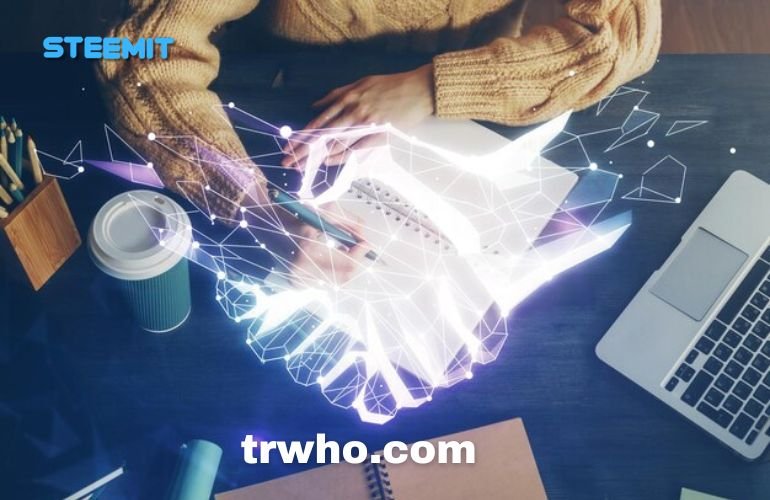Platforms promising security and collaboration often struggle to balance user autonomy with collective accountability. trwho.com challenges this norm by redefining how online communities build credibility. Through user-driven validation and decentralized systems, the platform prioritizes transparency without sacrificing innovation. Its approach integrates peer reviews, advanced encryption, and adaptive frameworks designed for emerging industries. This article explores how trwho.com’s model reshapes digital trust, the mechanisms safeguarding data, and its vision for equitable collaboration. Discover how a community-first strategy could redefine the future of secure, decentralized ecosystems.
Building Trust Through Community-Driven Validation
Trust on trwho.com is rooted in collective input, not centralized authority. Users validate profiles, services, and content through peer reviews and endorsements, creating a self-regulating ecosystem. This system allows niche communities—from AI developers to blockchain innovators—to establish credibility based on shared expertise. Each endorsement carries weight, as contributors stake their reputations on the accuracy of their feedback.
The platform avoids rigid hierarchies by distributing validation power across its user base. For example, in emerging sectors like decentralized finance, community members collaboratively assess new projects, reducing reliance on traditional gatekeepers. Transparency is maintained through open audit trails for reviews, letting users trace how ratings are formed.

Challenges like bias or misinformation are countered by requiring diverse consensus for high-stakes validations. Moderation tools let communities flag suspicious activity, while accountability measures prevent anonymous sabotage. By blending open participation with structured checks, trwho.com balances flexibility and reliability, proving that trust can scale without sacrificing nuance.
Advanced Security Framework and Data Protection
TRWHO.com’s security model integrates multiple layers to defend against evolving threats. Data protection begins with AES-256 encryption for stored information and TLS protocols for data in transit, creating barriers against unauthorized access. The platform applies encryption consistently across user interactions, from profile details to peer reviews.
Access controls require multi-factor authentication, combining passwords with device-based verification or biometric checks. Permissions are granular, allowing users to define who views or edits their content. Administrative privileges follow a zero-trust approach, demanding repeated verification for sensitive operations.
The platform aligns with global standards like GDPR and ISO 27001, undergoing third-party audits to confirm compliance. Regular scans identify vulnerabilities, with patches deployed automatically to minimize exposure. A dedicated team monitors network activity for anomalies, triggering alerts for potential breaches.
Incident response protocols outline clear steps for containment, investigation, and communication during security events. Users receive real-time notifications about breaches affecting their accounts, alongside guidance for mitigating risks. Educational resources, including tutorials and threat bulletins, help users recognize phishing attempts or malware.
By merging robust encryption, strict access policies, and proactive threat management, TRWHO.com maintains a secure environment where community trust can thrive without compromising adaptability.
Key Features and User-Centric Platform Design
TRWHO.com merges versatility with simplicity, offering tools tailored to diverse tech communities. The platform hosts specialized hubs for artificial intelligence, blockchain, robotics, and virtual reality, each equipped with collaboration spaces for project discussions, resource sharing, and peer feedback. Users in these niches can publish research, prototype ideas, or seek validation from experts, fostering cross-disciplinary innovation.
The interface emphasizes clarity, with customizable dashboards that prioritize frequently used tools. Navigation relies on intuitive filters, letting users sort content by relevance, recency, or community ratings. Search algorithms prioritize accuracy, scanning peer-endorsed materials before less-vetted sources. Interactive tutorials guide newcomers through core functionalities, reducing onboarding friction.
Hardware developers, for instance, access version-control systems for collaborative prototyping, while software teams integrate APIs for real-time testing. Augmented reality features allow 3D model previews within discussion threads, bridging communication gaps between technical and non-technical members. Privacy settings let users toggle between public and invite-only project visibility, balancing openness with control.
Personalization extends to notifications, where machine learning adapts alerts based on individual activity patterns. Users receive fewer interruptions for low-priority updates and prioritized signals for critical feedback or security events. Community moderation tools empower groups to set their own guidelines, enforce them through collective voting, and escalate disputes to platform mediators if needed.
By aligning its design with the workflows of tech professionals, TRWHO.com becomes more than a forum—it evolves into a dynamic workspace where trust and utility coexist.
Addressing Challenges in Decentralized Trust Ecosystems
Decentralized trust models introduce complexities, such as uneven participation and conflicting community standards. trwho.com tackles these by embedding structured flexibility into its design. One challenge lies in preventing biased validations. The platform mandates input from varied user groups for critical endorsements, reducing the risk of dominance by a single perspective. For example, project approvals in sectors like AI ethics require consensus among developers, ethicists, and end-users.
Misinformation is countered through traceable audit trails. Every review or rating displays its origin, allowing users to assess the credibility of contributors. Communities can flag disputed claims, triggering reevaluation by a broader panel. Persistent user identities linked to activity histories discourage anonymous sabotage, as repeated false claims degrade a member’s influence.
Balancing open collaboration with moderation involves customizable community guidelines. Groups vote on rules, such as content thresholds or membership criteria, while platform mediators intervene only when disputes escalate. Automated alerts highlight unusual activity spikes, like sudden negative reviews, prompting human review.
Scalability is managed through adaptive validation tiers. Smaller communities rely on direct peer feedback, while larger networks use reputation-weighted voting to maintain efficiency. This layered approach preserves nuance, allowing niche groups to thrive without imposing one-size-fits-all policies.
By integrating transparency, adaptable governance, and participatory oversight, trwho.com demonstrates that decentralized trust can evolve without centralized control, fostering resilience in diverse digital ecosystems.
Future Directions: Enhancing Collaboration and Equity in Digital Trust
trwho.com’s roadmap prioritizes tools that amplify diverse voices and reduce systemic biases. Plans include expanding decentralized governance models, letting communities propose and vote on platform policies directly. Pilot programs test token-based voting systems, where users earn influence through consistent, constructive participation rather than financial stakes.
Cross-industry interoperability is a focus. Developers are exploring APIs that let trwho.com’s trust metrics integrate with external platforms, enabling portable reputations. For instance, a blockchain project validated on trwho.com could display its ratings on partner sites, broadening its reach without redundant verification.
Equity initiatives target accessibility gaps. Localized interfaces and low-bandwidth compatibility aim to engage users in regions with limited connectivity. Machine translation tools are in development to break language barriers, while mentorship programs connect emerging innovators with established experts in their fields.
Upcoming features include conflict-resolution modules, where AI assists mediators in identifying fair compromises during disputes. These tools analyze past resolutions and suggest balanced outcomes, reducing human bias. Privacy-preserving analytics will let communities assess engagement trends without exposing individual data.

Partnerships with academic institutions and industry consortia aim to refine trust frameworks for sectors like healthcare or green tech, where credentialing demands rigor. By evolving through open dialogue and iterative design, trwho.com positions itself as a blueprint for trust ecosystems that value adaptability as much as stability.
Conclusion
trwho.com reimagines digital trust by merging community validation with robust security, proving that decentralized systems can foster credibility without centralized control. Its model thrives on transparency, adaptability, and user agency, addressing modern challenges like misinformation and fragmented collaboration. By prioritizing equitable participation and continuous innovation, the platform sets a precedent for how online ecosystems might evolve. As industries increasingly demand flexible yet secure networks, trwho.com’s blend of peer-driven accountability and forward-looking tools offers a viable path toward more resilient and inclusive digital interactions. The journey toward trustworthy, collaborative spaces is ongoing, but frameworks like this suggest a tangible blueprint for progress.





